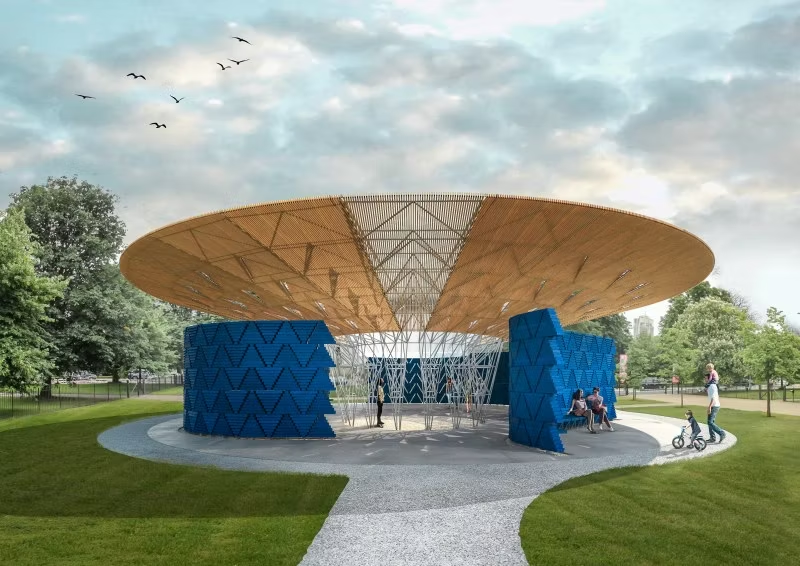Diébédo Francis Kéré is officially the latest architect selected to design London’s annual Serpentine Pavilion. The 17th architect to be chosen for the distinguished challenge, Kéré is also the first African designer to receive the commission.

Renderings released today reveal Kéré’s design as an oversized wooden disc that hovers above a series of curving blue walls formed from staggered wooden blocks. This canopied community space, set for construction in Kensington Gardens this summer, will also funnel rainwater through a circular opening in the timber-slat roof.
Kéré said the pavilion references the shape of the central tree in his native village of Gando, Burkina Faso. “The tree is a place where people gather together,” said the architect in a statement. “Like the shade of the tree branches, the Pavilion becomes a place where people can gather and share their daily experiences.”

The Pavilion’s central aperture creates an immediate connection to nature, according to Kéré. While air circulates freely and light streams through the steel-framed structure on sunny days, the roof’s oculus will also create a waterfall effect inside the structure on rainy days before filtering into a drainage system hidden underground.
“In Burkina Faso, I am accustomed to being confronted with climate and natural landscape as a harsh reality,” he said. “For this reason, I was interested in how my contribution to this Royal park could not only enhance the visitor’s experience of nature, but also provoke a new way for people to connect with each other.”
At night, the Pavilion’s walls become a source of illumination as small gaps showcase the light from movement and activity inside.

Gando Primary School Extension via Kéré Architecture
Kéré leads the Berlin-based architecture firm Kéré Architecture, where he focuses on socially engaged and ecological design. The award-winning architect is most well-known for his characteristically stripped-back structures and his use of community capacity-building through architecture.
His work — including built, in-design and under-construction projects — includes a primary school in Burkina Faso, an educational campus in Kenya and an “opera village” in Laongo. In 2014, his projects were presented in the Royal Academy’s “Sensing Spaces” exhibition, the 2015 Chicago Biennial and the 2016 Venice Biennale where he showcased a new national parliament building for his native country.
Since 2000, the Serpentine Galleries has invited architects to create a temporary pavilion each year, giving them the opportunity to create their first built projects in England. Last year’s “unzipped wall” by Danish architect Bjarke Ingels received record attendance.
Kéré’s design for the Serpentine Pavilion 2017 will be open from June 23 to Oct. 8.
Images via the Serpentine Galleries









